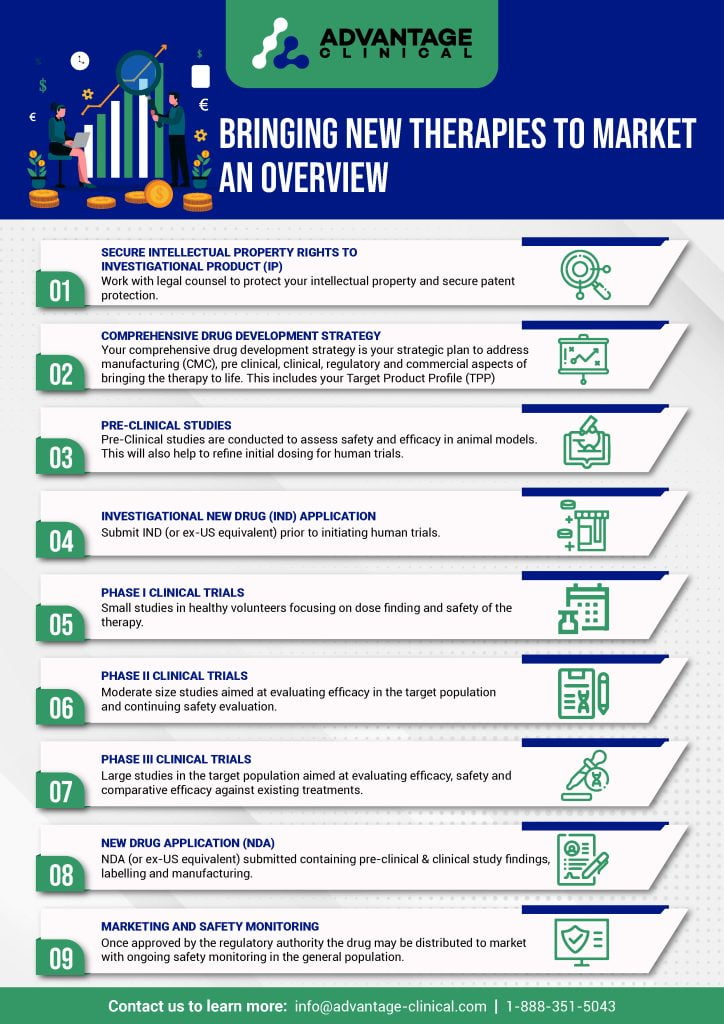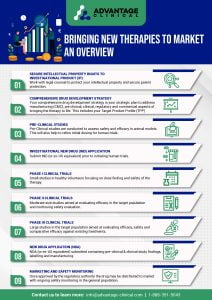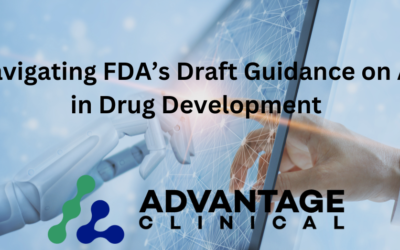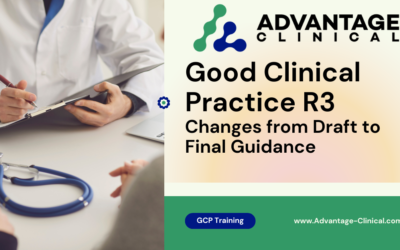
How do I get started? A Crash course on bringing new therapies to market
Starting a pharmaceutical company and bringing a drug to market is a complex process that requires significant expertise, resources, and adherence to regulatory requirements. Here’s a general roadmap to get you started.
Have a look through the below graphic and scroll down to find more information below.
Secure Intellectual Property Right to Investigational Product
First and foremost ensure you have secured all intellectual property rights and patent protection. In the US this will be a 20 year term. This is the period in which you will complete all research, gain approvals, and market the product before generic competition.
Comprehensive Drug Development Strategy
Your comprehensive drug development strategy will cover all of the aspects of drug development including:
- Manufacturing
- Pre-Clinical studies
- Regulatory strategy
- Commercial strategy
- Target Product Profile
Your target product profile outlines the desired characteristics of your therapy aimed a particular disease or condition. This will include things such as:
- Primary Indication
- Patient Population
- Treatment Duration
- Delivery Mode
- Dosage Form
- Treatment Regimen
- Efficacy targets
- Safety / Risks
- Therapeutic Modality
Pre-Clinical Studies
Conducted in animal models, pre-clinical studies are designed to assess safety and efficacy characteristics of the Investigational Product (IP). Each product type will require adjusted models for pre-clinical studies.
Pre-clinical studies will also help to refine initial dosing for human trials.
Investigational New Drug Application
In the United States an IND is to be submitted to the FDA containing the following general elements. Outside of the US each Ministry of Health will have slightly different names for this submission, though the purpose of the submission remains consistent.
- Animal Pharmacology and Toxicology Studies- This is your pre-clinical study data
- Manufacturing Information- Chemistry Manufacturing and Control (CMC). This
includes data on stability, composition etc. - Clinical Protocols- Detailed research protocols for the proposed clinical investigations
to assess whether or not subjects will be exposed to unnecessary risks.
Phase 1 Clinical Trials
Phase 1 studies are generally conducted in healthy volunteers, though in some indications such as Oncology, these may be conducted in patients with the target condition.
These studies are generally quite small and very tightly controlled. Here we are focusing on dose finding and looking at the safety profile in human subjects.
While these studies do not take long to complete, their data is crucial to determining if and we move into phase 2 studies.
Phase 2 Clinical Trials
In phase 2 trials we are expanding beyond healthy subjects to those while are experiencing our target indication. We are looking to include subjects without too many comorbitities so we can more clearly see how our product functions.
In these studies we are continuing to evaluate the safety profile, and now we are starting to look at efficacy as a primary endpoint.
These studies tend to be moderately sized and may include >100 subjects. Phase studies can take anywhere from 1-2 years to complete.
Phase 3 Clinical Trials
Finally in phase 3 studies we are looking at how our product’s safety and efficacy in a population that would closely match those individuals who would consume our product once it hits the market.
These studies can be quite large and may have >1000 subjects.
Phase 3 studies can take 2-4 years to complete.
New Drug Application
After all this hard work, we are ready to submit our New Drug Application. Along the way you would have been consulting with your regulator (ie FDA) and now you are ready to submit your data.
Your NDA will contain quite a bit of information including:
- Manufacturing (CMC)
- Proposed Labelling
- Clinical Studies
- Pre-Clinical Studies
Your New Drug Application is essentially your proposal to the regulator approve your drug for marketing to the general public. The regulator is looking to determine:
- Whether the drug is safe and effective
- The benefits outweigh the risks
- The drug’s labelling is appropriate
- If the manufacturing methods to ensure the drug’s quality are adequate
Marketing and Safety Monitoring
The process for NDA review can take a lot of time, but once you are approved you are ready to hit the market.
Along the way you’ve been getting ready for manufacturing, marketing and distribution. Once the drug hits the market your work doesn’t stop there.
Ongoing monitoring for safety issues is paramount of ensure the safety of the general public. These may be called Phase 4 trials.
It’s important to note that the process of bringing a drug to market can take many years and requires substantial financial investment. Additionally, regulatory requirements vary by country, so it’s essential to familiarize yourself with the specific regulations governing pharmaceutical development and commercialization in your target market. Consulting with experts in pharmaceutical development and regulatory affairs can also be valuable in navigating this complex process.




